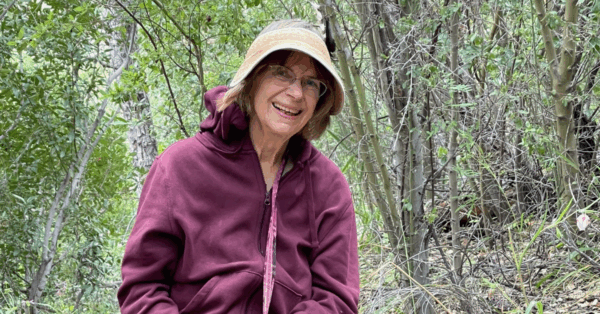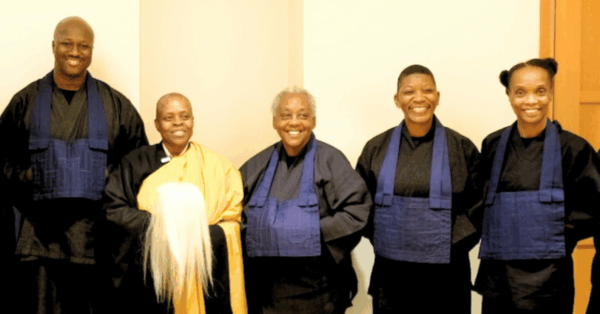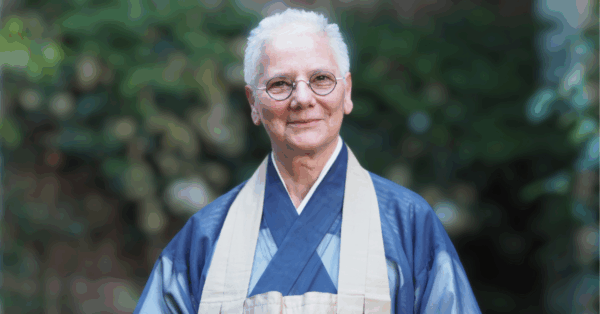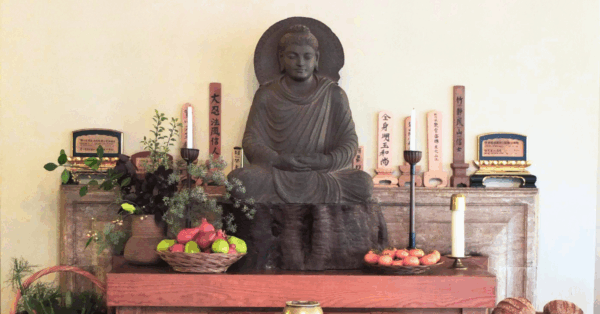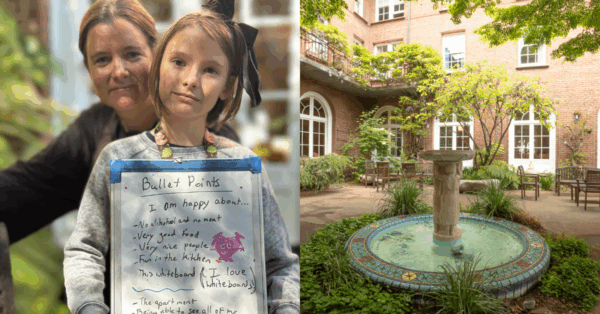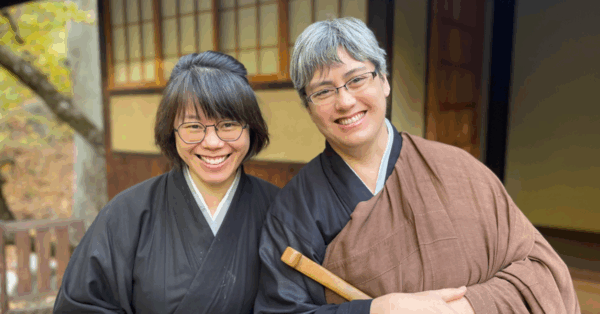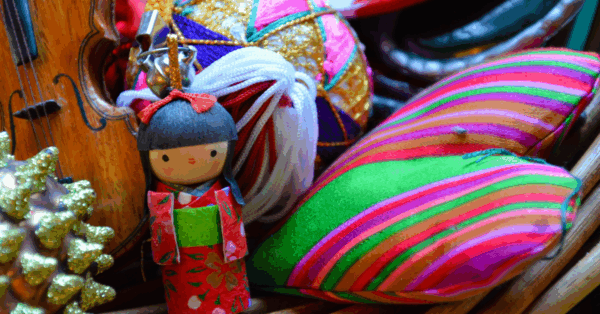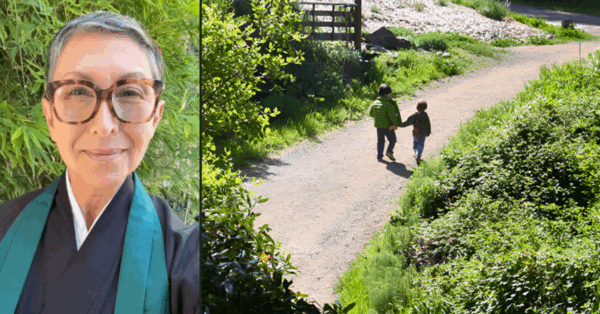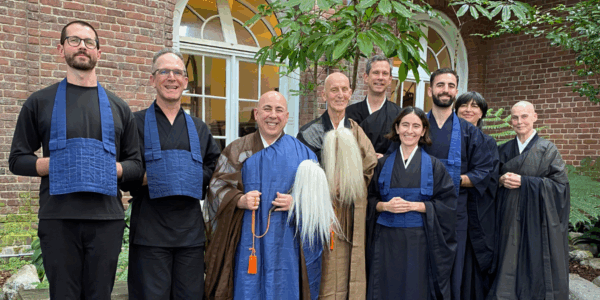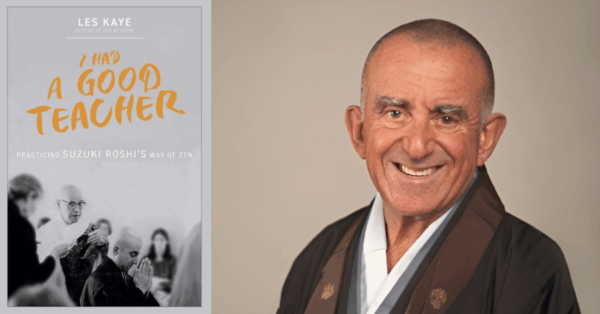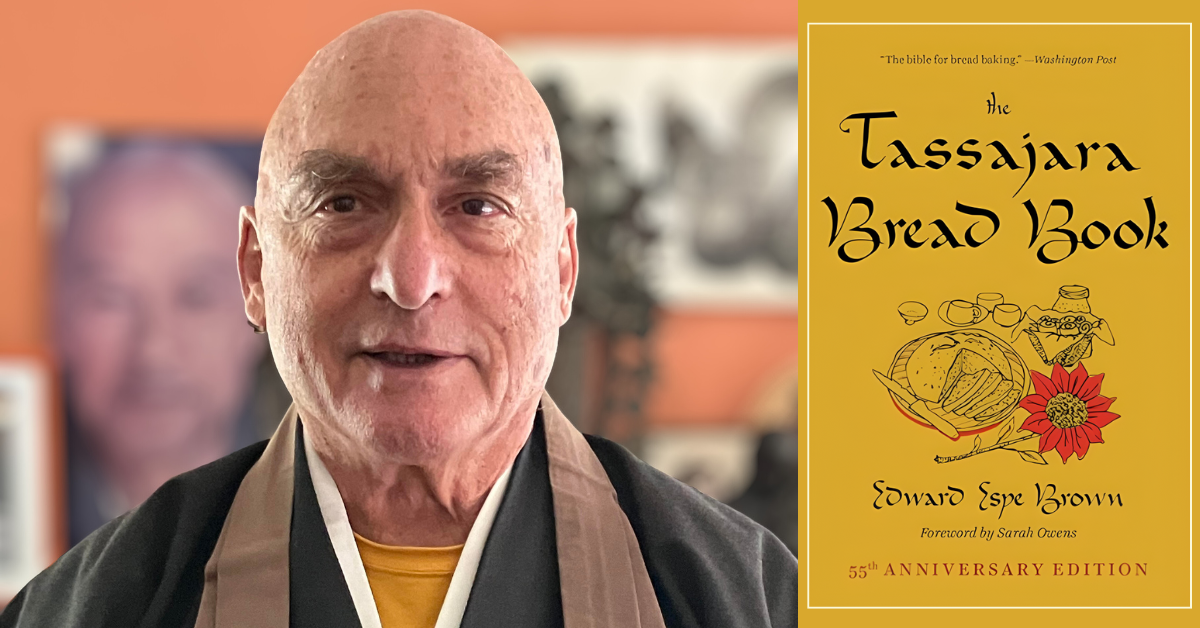
By Tova Green
“The Tassajara Bread Book changed bread baking in America,” reflects author Edward Espe Brown. “Part of making bread is learning the legacy and the history of breadbaking, appreciating ancestry. When we bake today, we renew that ancestry.”
This month, Shambhala published the 55th Anniversary Edition of Brown’s legendary cookbook, with a new foreword by Sourdough author Sarah Owens. The anniversary edition features the classic original earthy brown cover, which was initially suggested by Sam Bercholz, Shambhala’s first editor and book designer.
Edward Brown has been practicing Zen since 1965. He was ordained as a Zen priest in 1971 by Shunryu Suzuki Roshi, who gave him the name Jusan Kainei, Longevity Mountain Peaceful Sea. Edward received Dharma Transmission from the late Sojun Mel Weitsman in 1996. He is the author of several books, including No Recipe: Cooking as Spiritual Practice, and edited a book of Suzuki Roshi lectures, Not Always So.
First published in 1970, The Tassajara Bread Book stood as Shambhala’s best-selling title for a long period. Several editions followed, each with different forewords and slightly different designs. The recipes and drawings by Frances Thompson and Kent Rush, however, remained the same. For the 55th Anniversary Edition, Edward made a few small but significant changes to the recipes. He refreshed the basic recipe for Tassajara yeasted bread, which, along with water, yeast, and flour, had originally included powdered milk; the recipe now calls for liquid cow’s milk or nondairy milk. He also worked on the biscuit recipe. “I realized how much milk one adds to the dough depends on how cold the butter is. It’s better to let the butter reach room temperature. If it is used straight from the refrigerator, it can be grated.”
Edward describes the Tassajara Bread Book as “an historical piece,” and says he knows “seven to ten people who started successful bakeries using the Tassajara Bread Book.” He cites Bread Alone in upstate New York as one such bakery: “Ben Leader started it in his mother’s kitchen. Now they make 75,000 loaves a day.”
In the book’s introduction, Edward recalls visiting his Aunt Alice in Falls Creek, Virginia as a child and discovering home-baked bread. He describes experiencing “joyful delight in the welcome home aromas, as well as the indescribable depth and intensity of flavors in the eating…I felt unbelievingly nourished.” Edward asked his parents why they didn’t have that kind of bread at home. (In those days grocery stores sold mostly white, puffy, sliced loaves.) Edward resolved: “I will learn to make bread and teach others how to make bread.”
The opportunity to learn about bread-baking came eleven years later, in 1966, when he was working at Tassjajara Hot Springs, the year before it was bought by San Francisco Zen Center and became Tassajara Zen Mountain Center. Hired as a dishwasher, Edward was taught to bake bread by two of the cooks. He soon became the temple’s bread baker.
Before long, Edward began teaching others to bake bread at Tassajara. “Bread is more than a recipe. You need to know what to do with your hands. If you want to know how to make the bread, come to the kitchen at 5 am,” he would tell students.
Edward still encourages people to bake bread. In the introduction to the 55th Anniversary Edition, he writes, “Working to bake bread can renew our spirit, and with this work we renew the world, our friends and neighbors.”
Edward Espe Brown will be at Green Gulch Farm for a free book event and book signing on November 2 from 2pm–3:30 pm. He will read excerpts from the 55th Anniversary Edition of The Tassajara Bread Book, which The Washington Post has called “the bible for bread baking.” Copies will be available for purchase in the Green Gulch bookstore.


